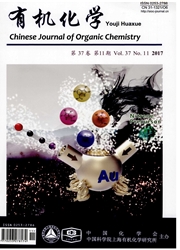

 中文摘要:
中文摘要:
均相催化剂具有催化活性高、选择性好等优点,但是产物难于纯化、催化剂不易回收等问题一直制约它的应用.两相体系为这些问题的解决提供了一条新途径.超临界二氧化碳参与的两相体系是使用超临界二氧化碳作流动相,其它一些对环境友好的反应介质,如:水、离子液体、聚乙二醇等,用于固定催化剂,进行金属络合物催化的有机合成反应.其显著特点是将反应与分离两步操作并于一个过程中完成,即所谓“均相反应、非均相分离”过程。实现均相催化过程的连续化.综述了近几年来超临界二氧化碳促进的两相体系的研究进展,并介绍其在有机合成反应中的应用.
 英文摘要:
英文摘要:
Homogeneous catalysts offer many advantages, including high activity and selectivity, while they generally present problems at the separation stage of a process, both in product purification and in catalyst recovery. Biphasic systems can provide one way to deal with these problems. The biphasic catalysis systems using supercritical carbon dioxide (scCO2) as the continuous phase and another green reaction medium, such as water, ionic liquid, polyethylene glycol, respectively, as the stationary catalyst phase are described herein for the metal-mediated chemical reactions. An important advantage of adopting scCO2 with those biphasic systems from an engineering point of view was the possibility to combine reaction and separation into only one integrated process, namely the so-called homogeneously reacted while heterogeneously separated process. Recent progress in this field is reviewed in this paper.
 同期刊论文项目
同期刊论文项目
 同项目期刊论文
同项目期刊论文
 期刊信息
期刊信息
